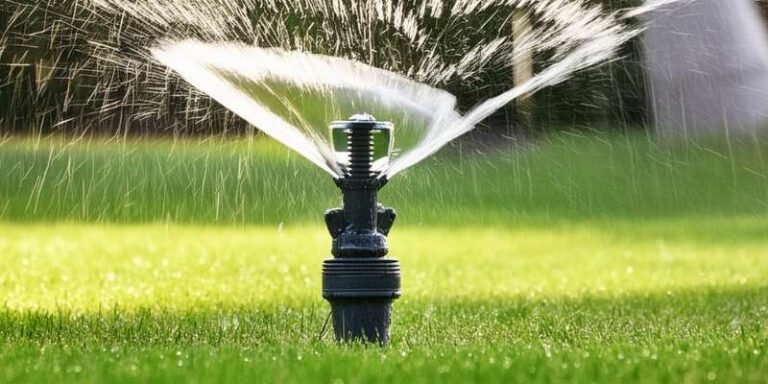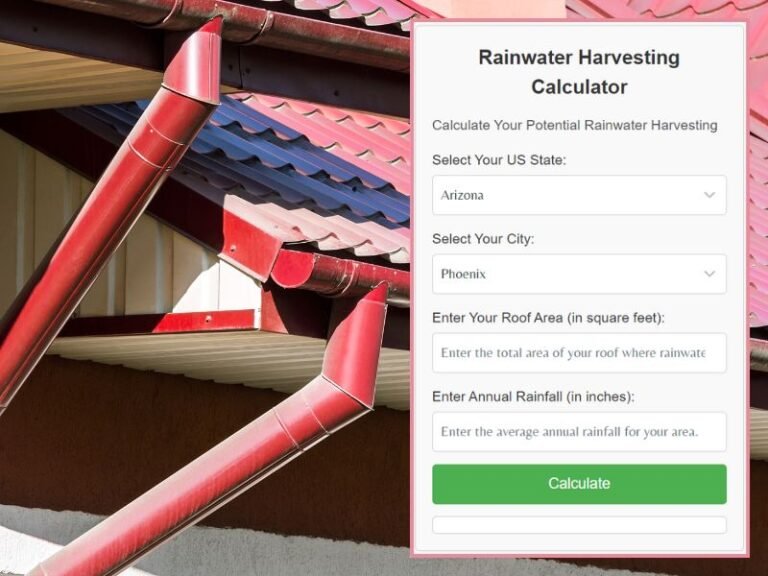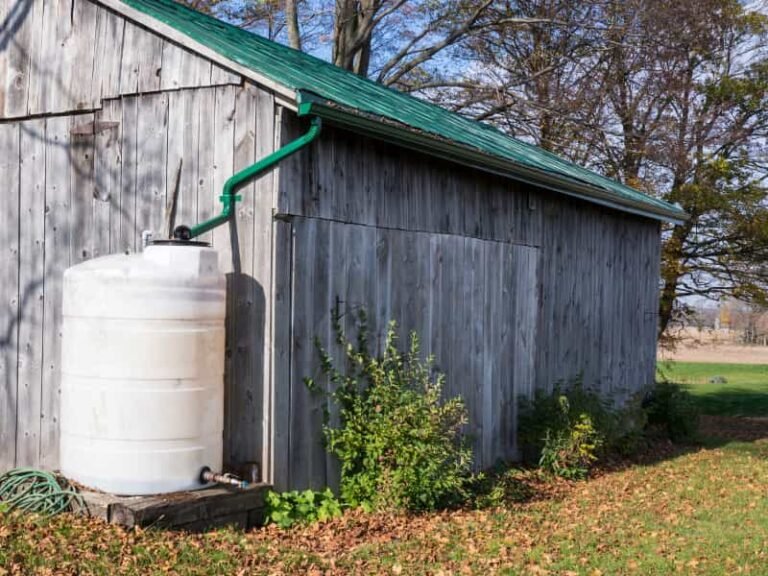Drink to Your Health: Rainwater Harvesting Benefits for Wellness
In today’s world, where environmental sustainability and personal wellness are increasingly important, rainwater harvesting stands out as a practice that addresses both concerns effectively. By collecting and storing rainwater, we can significantly reduce our dependence on traditional water sources, leading to numerous advantages for our health and the environment. Understanding the rainwater harvesting benefits for wellness can inspire us to adopt this eco-friendly practice, contributing to a healthier lifestyle and a more sustainable future. In this blog, we’ll explore how rainwater harvesting not only supports water conservation but also enhances our overall well-being.
Importance of Clean Water for Health
Access to clean, safe water is fundamental to human health and well-being, with profound implications for both individuals and communities. Clean water is essential for hydration, sanitation, and the prevention of waterborne diseases, playing a critical role in supporting overall health and quality of life. Let’s explore in-depth the importance of clean water for health, backed by data and statistics.
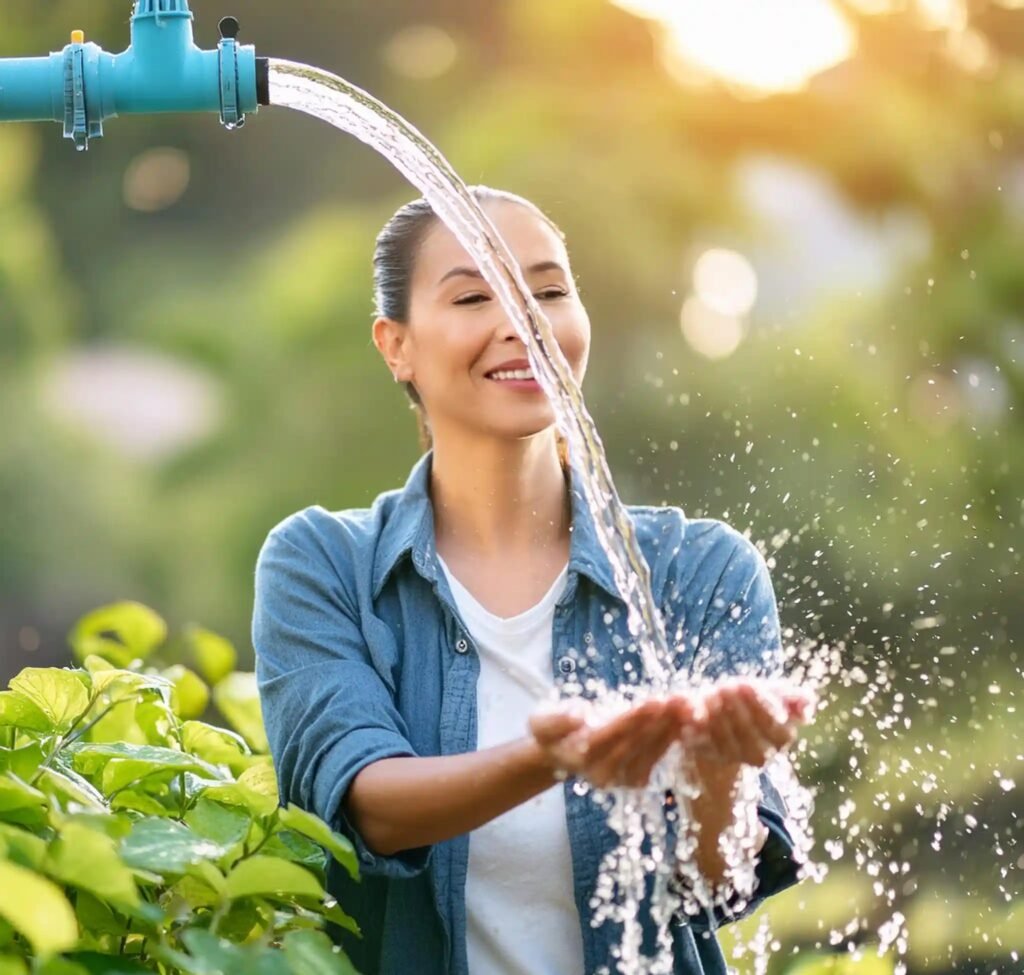
Health Impacts of Contaminated Water
| Waterborne Disease | Impact on Health |
|---|---|
| Diarrheal Diseases | Diarrheal diseases, primarily caused by contaminated water and poor sanitation, are a leading cause of morbidity and mortality worldwide. According to the World Health Organization (WHO), diarrhea kills over 2.2 million people annually, with children under five years of age being the most affected. |
| Cholera | Cholera is an acute diarrheal infection caused by ingestion of food or water contaminated with the bacterium Vibrio cholerae. Cholera outbreaks can spread rapidly in areas with inadequate sanitation and hygiene practices, leading to severe dehydration and death if left untreated. |
| Typhoid Fever | Typhoid fever, caused by the bacterium Salmonella Typhi, is transmitted through contaminated food and water. The disease is characterized by high fever, headache, abdominal pain, and can lead to serious complications if not treated promptly with antibiotics. Typhoid remains a significant public health concern in many parts of the world. |
Water Quality and Public Health
Ensuring access to clean water is essential for protecting public health and preventing waterborne diseases. According to the Centers for Disease Control and Prevention (CDC), access to safe drinking water can reduce the risk of waterborne illnesses by up to 25%. Furthermore, improvements in water quality have been linked to significant declines in diarrheal diseases and other water-related illnesses.
Impact of Unsafe Water on Vulnerable Populations
| Vulnerable Population | Impact of Unsafe Water |
|---|---|
| Children | Children are particularly vulnerable to the health impacts of unsafe water due to their developing immune systems and higher susceptibility to infections. Contaminated water can lead to acute and chronic illnesses, stunted growth, malnutrition, and cognitive impairments, with long-lasting consequences for health and well-being. |
| Pregnant Women | Pregnant women are at increased risk of complications from waterborne diseases, which can affect both maternal and fetal health. Inadequate access to clean water and sanitation during pregnancy can lead to preterm birth, low birth weight, and maternal mortality, highlighting the importance of safe water for maternal and child health. |
Economic and Social Costs of Waterborne Diseases
The economic and social costs of waterborne diseases are substantial, affecting individuals, families, and communities alike. According to the World Bank, waterborne illnesses impose a significant economic burden on healthcare systems, leading to increased healthcare expenditures, lost productivity, and reduced economic growth in affected regions. Additionally, the social costs of waterborne diseases include reduced quality of life, impaired educational attainment, and social stigma associated with illness and disability.
Clean water is a cornerstone of public health, essential for ensuring the well-being of individuals and communities worldwide. By investing in water infrastructure, implementing effective sanitation measures, and promoting hygiene practices, we can improve access to clean water and prevent waterborne diseases. Ensuring universal access to safe water is not only a moral imperative but also a sound investment in the health, prosperity, and resilience of societies around the globe.
Can You Drink Rainwater: Myths And Facts
Rainwater has long been a subject of fascination and debate when it comes to its suitability for drinking. While some people believe that rainwater is pure and safe to drink straight from the sky, others express concerns about potential contaminants and health risks. Let’s explore common myths and facts surrounding the safety and drinkability of rainwater.
Myths vs. Facts
| Myth | Fact |
|---|---|
| Rainwater is pure and safe to drink without treatment | While rainwater is generally clean when it falls from the sky, it can become contaminated by pollutants and debris as it travels through the atmosphere and collects on surfaces such as rooftops and gutters. Contaminants such as dust, pollen, bird droppings, and chemicals from air pollution can impact the quality of harvested rainwater. |
| Boiling rainwater makes it safe to drink | Boiling rainwater can kill bacteria and pathogens, making it safer for consumption. However, boiling alone may not remove chemical contaminants or pollutants that could be present in the rainwater. To ensure safe drinking water, it’s advisable to combine boiling with additional purification methods such as filtration or chemical treatment. |
Additional Myths and Facts
| Myth | Fact |
|---|---|
| Rainwater is free from pollutants and toxins | While rainwater is relatively pure when it falls from the sky, it can pick up contaminants and toxins as it travels through the atmosphere and comes into contact with surfaces such as rooftops, trees, and air pollutants. |
| Rainwater harvesting systems are unsanitary | When properly designed, installed, and maintained, rainwater harvesting systems can provide a safe and reliable source of water for various purposes. Regular maintenance, including cleaning gutters and storage tanks, is essential for ensuring the cleanliness and safety of harvested rainwater. |
Debunking Common Misconceptions
- Rainwater is always safe to drink: While rainwater is generally clean, it can become contaminated during collection and storage. Proper filtration and purification are necessary to ensure the safety of harvested rainwater for drinking.
- Boiling rainwater removes all contaminants: While boiling can kill bacteria and pathogens, it may not eliminate chemical contaminants or pollutants present in the rainwater. Additional treatment methods may be required to ensure safe drinking water.
- Rainwater harvesting systems are unsanitary: With proper maintenance and hygiene practices, rainwater harvesting systems can provide a safe and reliable source of water for various purposes. Regular cleaning and maintenance are essential for ensuring the cleanliness and safety of harvested rainwater.
- All rainwater is the same: The quality of rainwater can vary depending on factors such as location, atmospheric conditions, and collection surfaces. It’s essential to monitor and test collected rainwater regularly to ensure its safety and suitability for drinking.
While rainwater harvesting can provide a sustainable source of water for various purposes, including drinking, it’s essential to address common misconceptions and take appropriate precautions to ensure water safety. By understanding the facts and implementing proper filtration and purification measures, individuals and communities can enjoy the benefits of harvested rainwater while safeguarding their health and well-being.
Rainwater Harvesting Benefits for Wellness
Clean Water Source
Rainwater is inherently pure, free from the chemicals and additives often found in tap water. By collecting rainwater directly from rooftops into storage tanks, households can access a clean and reliable water source for various purposes, including drinking, cooking, and bathing.
Elimination of Harmful Contaminants Found in Municipal Water Supplies
Municipal water supplies may contain contaminants like lead, chlorine, and pesticides, which can pose health risks with long-term exposure. Rainwater harvesting mitigates this risk by providing an alternative source of water that is free from such pollutants, ensuring better health outcomes for individuals and communities.
Reduction in Exposure to Heavy Metals and Foreign Substances
Heavy metals like lead and arsenic are known to have adverse effects on health, even at low concentrations. Rainwater harvesting reduces exposure to these harmful substances by capturing rainwater before it comes into contact with potentially contaminated surfaces, such as pipes and treatment facilities.
Health Benefits of Drinking Rainwater
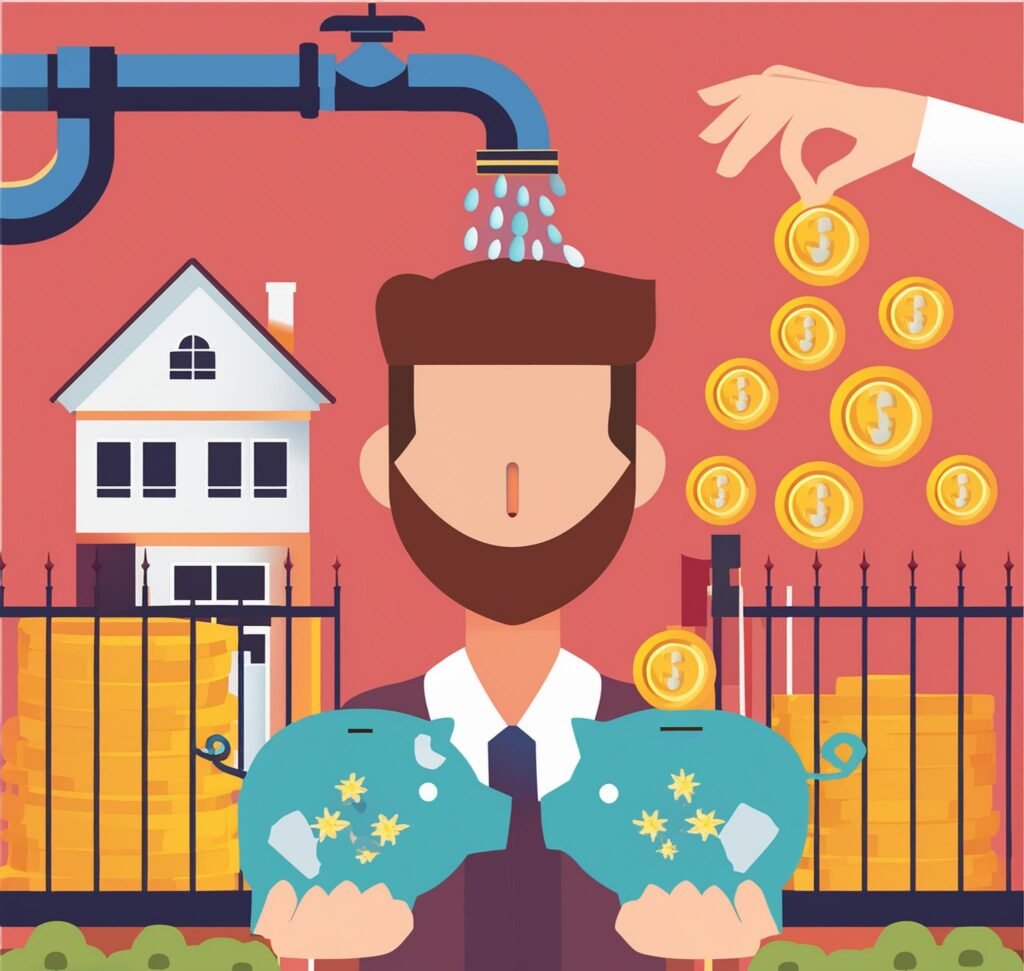
Improved Digestion and Absorption of Nutrients
Rainwater is naturally soft and devoid of minerals like calcium and magnesium, which can interfere with nutrient absorption. By drinking rainwater, the body can more effectively absorb essential nutrients from food, leading to better digestion and overall health.
Boosted Immune System from Clean Water Intake
Drinking clean, uncontaminated water is essential for maintaining a robust immune system. Rainwater harvesting provides a reliable source of pure water, free from the pathogens and pollutants that can compromise immune function. By consuming clean water, individuals can strengthen their immune systems and enhance their body’s ability to fight off infections and diseases.
Natural Softness
Rainwater is naturally soft, lacking the mineral content that causes hardness in tap water. This natural softness makes rainwater gentler on the skin and hair, reducing the risk of dryness and irritation associated with hard water.
Absence of Chlorine
Unlike municipal water supplies, which are treated with chlorine to kill bacteria and other pathogens, rainwater is chemical-free. The absence of chlorine makes rainwater more pleasant to drink and reduces the risk of chlorine-related health issues, such as respiratory irritation and allergic reactions.
Low in Sodium
Rainwater typically contains low levels of sodium, making it suitable for individuals on low-sodium diets or those with hypertension. By drinking rainwater, individuals can reduce their sodium intake without sacrificing hydration, promoting better heart health and overall well-being.
Neutral pH
Rainwater has a neutral pH, which is closer to the body’s natural pH levels than tap water. This balanced pH helps maintain the body’s internal environment, supporting optimal health and metabolic function.
Reduced Chemical Exposure
Rainwater is free from the chemical additives and contaminants often found in tap water, such as chlorine, fluoride, and pharmaceutical residues. By drinking rainwater, individuals can reduce their exposure to these potentially harmful substances and support better health outcomes.
Promotes Hydration
Staying hydrated is essential for overall health and well-being, but many people struggle to drink enough water each day. Rainwater harvesting provides a convenient and sustainable source of clean drinking water, making it easier for individuals to stay hydrated and maintain optimal health.
Helps in Detoxification
Drinking clean, pure water is essential for supporting the body’s natural detoxification processes. Rainwater, free from contaminants and additives, provides an ideal medium for flushing out toxins and waste products, promoting better detoxification and overall health.
Enhanced Immune Function
By providing a clean and uncontaminated source of water, rainwater harvesting supports optimal immune function. Drinking clean water helps bolster the body’s defenses against infections and diseases, ensuring better health outcomes for individuals and communities alike.
Comparison Between Average Water Usage and Potential Rainwater Harvesting Yields
Water is an essential resource for daily life, used for various purposes ranging from drinking and cooking to bathing and irrigation. However, traditional water sources like municipal supplies come with challenges such as cost, environmental impact, and reliability. Rainwater harvesting presents a sustainable alternative that can significantly augment water availability while mitigating these challenges. Let’s delve deeper into the comparison between average water usage and the potential yields of rainwater harvesting, examining the benefits in detail.
Average Water Usage
| Purpose | Average Annual Consumption (Gallons) |
|---|---|
| Drinking | 182.5 |
| Cooking | 18.25 |
| Bathing | 36.5 |
| Laundry | 54.75 |
| Toilet Flushing | 36.5 |
| Outdoor Irrigation | 219 |
| Total | 547.5 |
The table above outlines the average annual consumption of water for various purposes in a typical household. These estimates may vary depending on factors such as family size, lifestyle, and geographic location. However, they provide a general overview of water usage patterns and the significant impact on overall consumption.
Potential Rainwater Harvesting Yields
Rainwater harvesting systems have the potential to capture and store significant amounts of water, depending on factors such as roof size, rainfall patterns, and storage capacity. The following table illustrates the potential yields of rainwater harvesting based on different scenarios:
| Roof Size (Square Feet) | Average Annual Rainfall (Inches) | Potential Rainwater Harvesting Yield (Gallons) |
|---|---|---|
| 1,000 | 30 | 18,000 |
| 2,000 | 30 | 36,000 |
| 3,000 | 30 | 54,000 |
| 4,000 | 30 | 72,000 |
These estimates demonstrate the substantial amount of water that can be harvested from rooftops in areas with moderate to high rainfall. By capturing rainwater before it runs off into the ground, households can supplement or even replace traditional water sources for various purposes, including drinking, cooking, bathing, and irrigation.
Comparative Analysis
When comparing average water usage to potential rainwater harvesting yields, several key observations emerge:
- Resource Abundance: Rainwater harvesting taps into an abundant and renewable resource—rainfall—which can provide a reliable source of water even in regions prone to droughts or water scarcity.
- Cost Savings: By harnessing rainwater for non-potable uses such as irrigation and toilet flushing, households can significantly reduce their water bills and lower overall water consumption.
- Environmental Impact: Rainwater harvesting reduces reliance on centralized water systems, thereby lowering energy consumption, carbon emissions, and the strain on natural water sources.
- Resilience: In times of water shortages or emergencies, rainwater harvesting provides a decentralized and self-sufficient water supply, ensuring continued access to clean water for households and communities.
In conclusion, the comparison between average water usage and potential rainwater harvesting yields highlights the significant benefits of adopting rainwater harvesting systems. By harnessing the power of nature to capture and store rainfall, households can enhance water security, reduce costs, and promote sustainability for a healthier and more resilient future.
Impact on Reducing Strain on Public Water Systems
Potable Water Availability
As populations grow and demand for water increases, public water systems face mounting pressure to meet the needs of their communities. Rainwater harvesting helps alleviate this strain by providing an alternative source of potable water for households, reducing the burden on municipal supplies and infrastructure.
Gallons of Water Saved
On average, a single-family home can collect thousands of gallons of rainwater each year, depending on factors such as roof size, rainfall patterns, and storage capacity. By harnessing this abundant resource, households can significantly reduce their reliance on traditional water sources and contribute to water conservation efforts.
Consistent Access to Drinking Water During Droughts or Emergencies
In regions prone to droughts or water scarcity, rainwater harvesting systems provide a lifeline during times of crisis. By storing rainwater for future use, households can maintain a reliable supply of drinking water even when municipal sources are limited or unavailable, ensuring resilience in the face of environmental challenges.
Reduction in Dependency on Traditional Water Sources
By supplementing or replacing traditional water sources with harvested rainwater, households can reduce their dependency on centralized water systems and promote greater self-sufficiency. This not only helps conserve water resources but also fosters a sense of empowerment and resilience within communities.
10 Reasons To Harvest Rainwater
- Independent Water Supply: Rainwater harvesting provides households with a reliable source of water that is not dependent on municipal supplies or infrastructure.
- Reduce Water Bills: By using harvested rainwater for non-potable purposes such as irrigation and toilet flushing, households can significantly reduce their water bills.
- Tax Incentives (Depending On Your State): Some states offer tax incentives or rebates for installing rainwater harvesting systems, providing additional financial benefits to homeowners.
- Conserve and Recharge Groundwater: By capturing rainwater before it reaches the ground, harvesting systems help replenish groundwater reserves and prevent depletion of aquifers.
- Reduce Carbon Footprint: Rainwater harvesting reduces the need for energy-intensive water treatment and distribution, lowering greenhouse gas emissions associated with conventional water supply systems.
- Prevent Flood and Soil Erosion: By capturing rainwater runoff, harvesting systems help reduce the risk of flooding and soil erosion, preserving the integrity of ecosystems and infrastructure.
- Easy Maintenance: Rainwater harvesting systems require minimal maintenance and can be easily integrated into existing buildings and landscapes.
- Wide Range Of Uses: Harvested rainwater can be used for a variety of purposes, including irrigation, landscaping, and non-potable household tasks, reducing strain on municipal water supplies.
- Not Limited To Just Rainwater: In addition to capturing rainwater, harvesting systems can also collect and store other sources of water, such as runoff from air conditioning units and greywater from sinks and showers.
- A Barometer For Water Usage: By monitoring rainwater collection and usage, households can gain insights into their water consumption patterns and identify opportunities for conservation and efficiency.
Reducing Amount of Drinkable Water Used For Outdoor Irrigation
Outdoor irrigation accounts for a significant portion of residential water usage, especially in arid and semi-arid regions. By using harvested rainwater for watering lawns and gardens, households can reduce the demand for potable water and conserve valuable resources.
What to Know About Rainwater and Using it for Our Bottled Water Supply
The clear benefits of bottled rainwater production include its purity, sustainability, and minimal environmental impact compared to traditional bottled water sources. With consumers increasingly concerned about the quality and sustainability of their drinking water, bottled rainwater offers a compelling alternative that aligns with their values and preferences.
The Clear Benefits of Bottled Rainwater Production
Bottled rainwater production offers a sustainable and eco-friendly alternative to traditional bottled water sources, harnessing the natural purity of rainwater for drinking purposes. This innovative approach to water bottling provides numerous benefits for both consumers and the environment, ranging from superior water quality to reduced environmental impact. Let’s delve into the clear benefits of bottled rainwater production in detail.
Superior Water Quality
Rainwater is inherently pure, free from the contaminants and additives often found in conventional water sources such as groundwater or surface water. Bottled rainwater production involves collecting rainwater from pristine sources and subjecting it to rigorous filtration and purification processes to ensure its cleanliness and safety for consumption. The result is a premium-quality drinking water that is free from chemicals, pollutants, and harmful substances, offering a refreshing and natural taste that appeals to discerning consumers.
Environmental Sustainability
Bottled rainwater production promotes environmental sustainability by minimizing the environmental impact associated with traditional bottled water sources. Unlike bottled water sourced from natural springs or aquifers, which can deplete finite water resources and harm ecosystems, rainwater harvesting is a renewable and sustainable practice that relies on precipitation replenishment. By utilizing rainwater as a primary water source for bottling, companies can reduce their reliance on groundwater and surface water, conserving valuable resources and minimizing their carbon footprint.
Reduced Plastic Waste
One of the most significant benefits of bottled rainwater production is its potential to reduce plastic waste and mitigate the environmental burden of single-use plastics. Traditional bottled water packaging, typically made from PET plastic, contributes to plastic pollution and marine debris, posing significant threats to ecosystems and wildlife. In contrast, bottled rainwater production offers alternatives such as biodegradable or recyclable packaging materials, including glass bottles, aluminum cans, or compostable plastics. These eco-friendly packaging options help minimize plastic waste and support efforts to transition towards a circular economy.
Community Engagement and Sustainability Initiatives
Bottled rainwater production often involves community engagement and sustainability initiatives aimed at supporting local communities and promoting environmental stewardship. Many companies that produce bottled rainwater prioritize partnerships with local communities, implementing rainwater harvesting projects, supporting water infrastructure development, and investing in water conservation initiatives. These efforts not only benefit communities by improving access to clean water but also foster positive social and environmental impacts, creating shared value for stakeholders and society at large.
Bottled rainwater production offers clear benefits for consumers, the environment, and communities, providing a sustainable and premium-quality alternative to traditional bottled water sources. By harnessing the purity of rainwater and embracing eco-friendly practices, companies can promote environmental sustainability, reduce plastic waste, and support community development initiatives. As consumer demand for sustainable products continues to rise, bottled rainwater production represents a compelling solution that aligns with values of health, sustainability, and environmental responsibility.
Trends and Perspectives of Harvest Rainwater
As awareness of water scarcity and environmental sustainability continues to grow, the adoption of rainwater harvesting systems is experiencing a notable surge worldwide. This trend reflects a shift towards more eco-conscious practices and a recognition of the importance of conserving water resources for future generations. Let’s explore the evolving landscape of rainwater harvesting, along with emerging trends and perspectives shaping its trajectory.
Current Trends in Rainwater Harvesting
| Trend | Description |
|---|---|
| Urbanization and Population Growth | With rapid urbanization and population growth, there is increasing pressure on water resources in urban areas. Rainwater harvesting provides a decentralized solution to meet water demand and reduce strain on centralized water systems. |
| Climate Change and Water Scarcity | Climate change is exacerbating water scarcity in many regions, making rainwater harvesting an attractive option for mitigating water stress. By capturing and storing rainwater, communities can enhance water security and resilience in the face of changing climate patterns. |
| Technological Advancements | Advances in rainwater harvesting technology have made systems more efficient, cost-effective, and user-friendly. Innovations such as modular storage tanks, smart monitoring systems, and integrated filtration solutions are driving adoption and improving system performance. |
| Policy Support and Incentives | Governments and municipalities are increasingly recognizing the benefits of rainwater harvesting and implementing policies to promote its adoption. Incentives such as tax rebates, grants, and regulatory support are encouraging homeowners, businesses, and institutions to invest in rainwater harvesting systems. |
| Sustainability and Green Building Trends | Sustainability initiatives and green building standards are driving demand for water-efficient solutions like rainwater harvesting. Developers, architects, and building owners are incorporating rainwater harvesting into their designs to achieve LEED certification, reduce environmental impact, and enhance resilience. |
Perspectives on the Future of Rainwater Harvesting
| Perspective | Description |
|---|---|
| Water Security and Resilience | Rainwater harvesting plays a crucial role in enhancing water security and resilience, particularly in regions vulnerable to water scarcity and climate variability. By diversifying water sources and reducing dependency on centralized systems, rainwater harvesting strengthens community resilience and ensures reliable access to clean water. |
| Sustainable Water Management | As concerns over water conservation and sustainability continue to escalate, rainwater harvesting will play an increasingly important role in sustainable water management practices. By capturing and utilizing rainwater, communities can reduce demand on finite water resources, minimize environmental impact, and promote long-term water stewardship. |
| Community Engagement and Education | Educating and engaging communities about the benefits of rainwater harvesting is essential for driving widespread adoption and behavior change. Outreach efforts, public awareness campaigns, and educational programs can empower individuals and communities to embrace rainwater harvesting as a sustainable water management solution. |
| Innovation and Collaboration | Continued innovation and collaboration among stakeholders, including government agencies, industry partners, research institutions, and community organizations, will drive advancements in rainwater harvesting technology, policy, and best practices. By fostering a culture of innovation and collaboration, we can unlock new opportunities and address emerging challenges in water management. |
| Equity and Access | Ensuring equitable access to rainwater harvesting technology and benefits is critical for addressing water inequities and promoting social justice. Efforts to prioritize underserved communities, implement inclusive policies, and provide financial assistance can help bridge the gap and ensure that everyone has access to clean, safe water through rainwater harvesting. |
In conclusion, the future of rainwater harvesting is promising, with growing recognition of its role in promoting water security, sustainability, and resilience. By embracing emerging trends, fostering collaboration, and prioritizing equity and access, we can unlock the full potential of rainwater harvesting as a vital component of sustainable water management strategies. As we navigate the challenges of water scarcity and climate change, rainwater harvesting offers a practical and scalable solution to meet the water needs of present and future generations while safeguarding our planet’s precious water resources.
Frequently Asked Questions (FAQs) About Rainwater Harvesting
Can You Boil Rainwater to Drink?
Boiling rainwater is a common method used to kill bacteria and pathogens, making it safer for consumption. However, boiling alone may not remove chemical contaminants or pollutants that could be present in the rainwater. To ensure safe drinking water, it’s advisable to combine boiling with additional purification methods such as filtration or chemical treatment.
Does Rainwater Have Vitamins?
Rainwater is relatively pure and lacks the minerals and vitamins found in other water sources like groundwater or spring water. While rainwater may contain trace amounts of nutrients from the atmosphere, it is not a significant source of vitamins for human consumption. It’s essential to obtain essential nutrients from a balanced diet rather than relying solely on rainwater for nutritional needs.
What Are the Health Benefits of Drinking Rainwater?
Drinking clean, pure water is essential for overall health and well-being. Rainwater harvesting provides a source of water that is free from the additives and contaminants often found in municipal water supplies, promoting hydration and supporting vital bodily functions. Additionally, rainwater’s natural softness and neutral pH make it gentler on the body, reducing the risk of skin irritation and promoting better digestion and absorption of nutrients.
Is It Safe To Drink Rainwater?
While rainwater is generally safe for drinking, it can become contaminated by pollutants and pathogens as it falls through the atmosphere and comes into contact with surfaces such as rooftops and collection systems. To ensure the safety of harvested rainwater, it’s essential to implement proper filtration and purification methods to remove contaminants and pathogens before consumption. Additionally, regular testing of rainwater quality can help identify potential risks and ensure continued safety for drinking purposes.
How Sustainable Is Drinking Rainwater?
Rainwater harvesting is a sustainable practice that helps conserve water resources and reduce reliance on traditional water sources such as groundwater and surface water. By capturing and storing rainwater for various uses, households can reduce their environmental footprint and promote water conservation efforts. Additionally, rainwater harvesting systems can be designed to minimize energy consumption and environmental impact, further enhancing their sustainability.
How Clean Is Rainwater?
Rainwater is naturally pure when it falls from the sky, but it can become contaminated by pollutants and debris as it travels through the atmosphere and collects on surfaces such as rooftops and gutters. Common contaminants found in harvested rainwater include dust, pollen, bird droppings, and chemicals from air pollution. To ensure the cleanliness of collected rainwater, it’s essential to implement proper filtration and purification methods to remove contaminants before use.
How to Purify Rainwater for Drinking Naturally
Purifying rainwater for drinking can be achieved through various natural methods, including filtration, boiling, and chemical treatment. Filtration using activated carbon or ceramic filters can help remove particles and debris from rainwater, while boiling can kill bacteria and pathogens. Additionally, chemical treatments such as chlorination or UV disinfection can further purify rainwater and ensure its safety for consumption. It’s essential to choose the appropriate purification method based on the quality of the collected rainwater and specific health concerns.
Is Rainwater Good for Your Hair?
Rainwater’s natural softness and purity can be beneficial for hair health, as it lacks the minerals and additives often found in hard water sources like tap water. Washing your hair with rainwater can help reduce dryness, frizz, and scalp irritation, leaving your hair feeling softer, smoother, and more manageable. However, it’s essential to ensure that the rainwater used for hair washing is clean and free from contaminants to avoid any potential adverse effects on hair and scalp health.
The Bottom Line
Rainwater harvesting offers a host of health benefits, from providing a clean and pure source of water to promoting hydration and immune function. By harnessing this abundant resource, households can reduce their reliance on traditional water sources, conserve valuable resources, and contribute to a healthier, more sustainable future for all.
By adopting rainwater harvesting systems and practices, individuals and communities can play a vital role in safeguarding their health and the environment for generations to come. Whether through simple measures like collecting rainwater in barrels or installing sophisticated harvesting systems, everyone can contribute to a more sustainable water future while reaping the numerous health benefits of this age-old practice.


